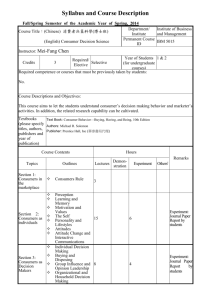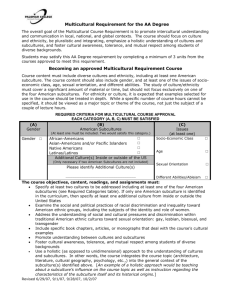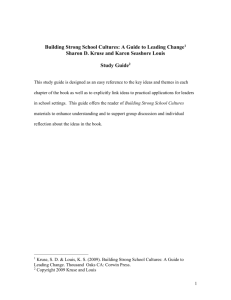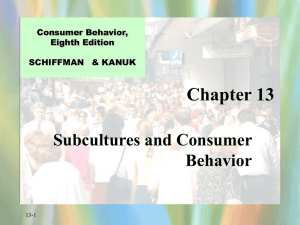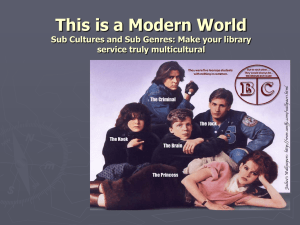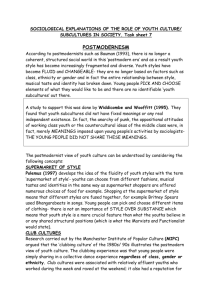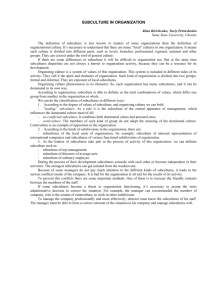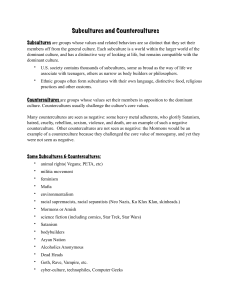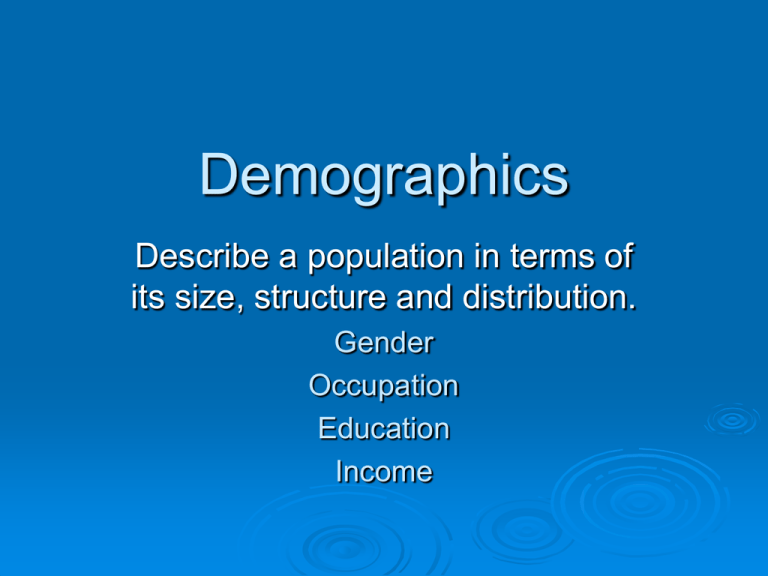
Demographics
Describe a population in terms of
its size, structure and distribution.
Gender
Occupation
Education
Income
Men vs. Women
Men
Women
Move faster
Spend less time
looking
Don’t like asking for
things
No apparent joy
Easily upgraded &
influenced
Enjoy shopping
Social activity
Demand more from
a shopping
environment
More patient and
inquisitive
Purchase Pals/Companion
Shoppers
Woman
shopping with a female
companion: 8 minutes, 15 seconds
Woman with children: 7 minutes, 19
seconds
Woman alone: 5 minutes, 2 seconds
Woman with man: 4 minutes 41 seconds
How should retailers deal with male
shoppers?
Gender:
Segmenting the Male Consumer
Are all men the same targets for shopping?
A Handy Guide to the Male Shopper
WARNING: Guys may or may
not recognize themselves
among these archetypes. But a
century after marketers drew a
big bull’s-eye on the female
consumer, slicing up the male
market is long overdue.
Anything to get past the fixation
on the metro and the retro.
The Metrosexual
The Maturiteen
The Modern Man
The Dad
The Retrosexual
What
is one of the first questions you
ask people when you meet them for the
first time?
How
does their response affect your
perception?
Does
it affect their consumption
patterns?
Occupational Influences on
Consumption
Education Level Influences on
Consumption
Income
A household’s income level combined with its
accumulated wealth determines its purchasing power.
Income enables purchases but does not generally
cause or explain them. Occupation and education
directly influence preferences for products, media, and
activities; income provides the means to acquire them
Income is generally more effective as a segmentation
variable when used in conjunction with other
demographic variables.
Age Cohorts
Can you guess which generation is the highest
prescription-drug user?
Can you guess what percent in each generation is on
at least one prescription-drug?
Mature Market
Generation X
Generation Y
Millennials
Age Cohorts
If you answered the “mature market” you were
correct.
And, those taking at least one prescription drug by
age category is as follows:
> 18: 24 percent
18-44: 35 percent
45-64: 62.1 percent
65+: 84 percent
Understanding American Generations
A Generation or age cohort is a
group of persons who have
experienced a common social,
political, historical, and economic
environment.
Cohort analysis is the process
of describing and explaining the
attitudes, values and behaviors
of an age group as well as
predicting its future attitudes,
values, and behaviors.
Cohort Effects and Preferences
Cohort
Coming of
Age
Money Motto
Sex Mindset Favorite
Music
Depression
1930-1939
Intolerant
Big Band
World War II
1940-1945
Ambivalent
Swing
Post-War
1946-1963
Save for a rainy
day
Save a lot, spend
a little
Save some,
spend some
Repressive
Frank Sinatra,
Patti Page
Boomers I
1964-1972
Permissive
Rock & Roll
Boomers II
1973-1983
Spend, spend,
borrow, spend
Spend, spend,
borrow, spend
Spend? Save?
What?
Permissive
Rock & Roll
Confused
Rap, Grunge,
Retro
Save young,
retire early
Terrified
Girl/Boy bands
Generation X 1984-1995
Generation Y 1995-2012
Subcultures
The Nature of Subcultures
A subculture is a segment of a larger culture whose
members share distinguishing values and patterns of
behavior.
Identification with a Subculture Produces Unique Market Behaviors
SUBCULTURES
A segment of a larger culture whose members
share distinguishing patterns of behavior
Ethnic Subcultures
• African-Americans; Hispanics; Asian-Americans; Native
Americans, Arab Americans…
• Ethnic minorities spend more than $600 billion a year on
products
Age Cohorts
• Gen Y; Gen X; Boomers; Depression; Pre-Depression
Regional Subcultures
• Texas Vs. California Vs. New York
Religious Subcultures
• Christian Subcultures (Catholic, Protestant, Born-Again);
Non-Christian Subcultures (Jewish, Muslim, Buddhist)
Ethnicity and Marketing Strategies
African Americans, Hispanic Americans, and Asian
Americans
Hispanic population is now the largest ethnic subculture (12.5%)
Asian Americans (3.6%) are the fastest-growing racial group
(due to immigration)
Groups hardly as homogeneous as many seem to
believe – diversity within groups
Defining/targeting an ethnic group is not always so easy
(“melting pot” society)
Many identify with two or more races
Many subcultures have stereotypes associations
Subgroups are assumed to possess certain traits (often
erroneously) which can be cast either positively or negatively
Regional Subcultures
Regional subcultures arise as a result of the following:
- climate conditions
- natural environment and resources
- characteristics of the various immigrant groups that
have settled in each region, and
- significant social and political events.
Regional Subcultures
Regional Consumption Differences

